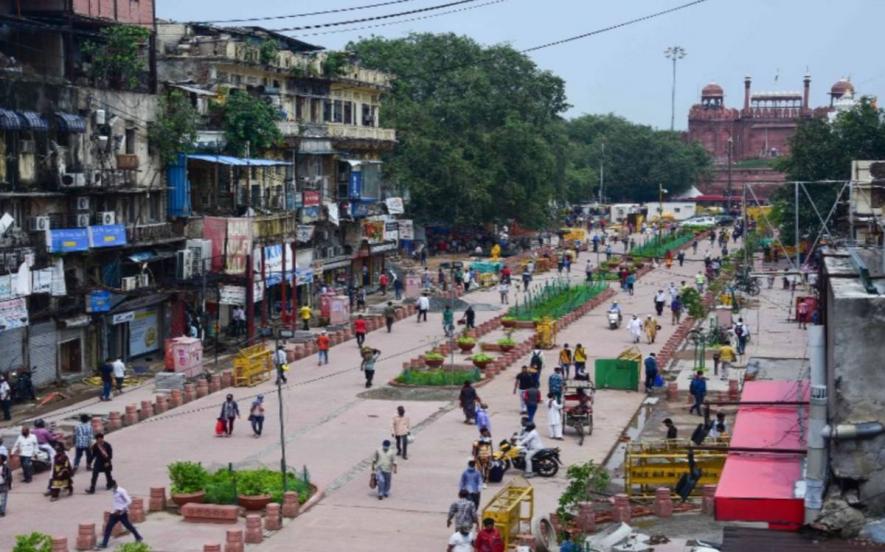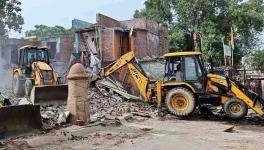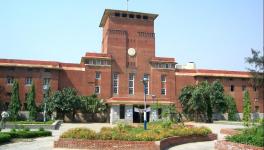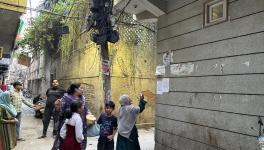A Need to Revisit the Chandni Chowk Redevelopment Project

Image Courtesy: The Hindu
The Chandi Chowk redevelopment project will be inaugurated by the Chief Minister of Delhi on April 17; good, however, if the Delhi government has an iota of sense and respect for the heritage and culture of the city and the region, the event must be shelved. Not just the event, even the work done must be revisited as it smacks of an outright rejection of heritage with no linkage to the old. It is a cultural shock and a sheer waste of money.
Designed in the 17th century by Shah Jahan and Jahanara, his daughter, Chandni Chowk has seen many changes, metamorphosing from the Shah Jahan to the Kejriwal era. The initial redevelopment project was conceived by Sheila Dikshit, the former CM, in 2008, and a special purpose vehicle was formed to move ahead with the plan.
It is said that after the release of the Hindi film Delhi-6 in 2009, the heritage of Delhi was considered for redevelopment at the highest levels. It was later, during the Kejriwal government, that Rs 65 crore was earmarked for the project. So far so good. However, what has the outcome looked like? Not heritage development, rather a disaster of the erstwhile and the present. Why, you ask.
While it hasn’t been long since the authors began living in the capital, the real sense and smell of Delhi is missing from this redevelopment project. Walking through Chandni Chowk street a few weeks ago, we were aghast with the sordid state of design, construction material and the removal of a large section of people from the area.
Before getting into the nitty-gritty, it would be desirable to conceptualise the idea of heritage redevelopment. The process seeks to match the basic ethos of the city, town or region, its spirit, culture and conceptualisation which led to its being. Take Chandni Chowk, or even Delhi, for that matter. The basic ethos is pedestrianisation and the culture of food, markets and living in the old havelis there. Any redevelopment must have revisited these aspects of the town.
Quito, the capital of Ecuador, was where one of the authors was a delegate for the UN-Habitat III Conference in October 2016. Quito has both, the old and the new cities. The old one, a UNESCO world heritage site, is far more remarkable than the new one. What has it done or conserved? It has conserved all the old buildings and turned them into residential places where tourists love to stay. The city is abuzz with activity all night with dancing, food, fun and everything tourists like. But, not a stone from the old city was changed. There are buildings there are as old as 500 years. The only additions made were to modernise toilets and sanitation. Likewise, neighbouring countries like Uzbekistan have developed their heritage wealth without turning old structures into ugly, modern plastered buildings. Khiva, a town in Uzbekistan, has similarly developed its old town and the old houses are proving to be the best tourist destinations.
What happened in Chandni Chowk was that instead of preserving the old structures, a demolition drive was carried out and the old was made to disappear; this is not heritage redevelopment. Instead, metal and glass showrooms were designed and constructed along the main road, which, in no case is an attraction to the site.
At Chandni Chowk, when one takes a turn into the newly-constructed boulevard crossing the mighty Red Fort, it seems that the red stone-paved road would give off a feeling of continuity. However, it does not. It instead looks like oddly-done patchwork.
On this busy market street, the shops lining the new boulevard have not seen any upgrades. The road is still clogged. Even though some street-side vendors try to do business, no real space has been created for them. Small bollards have been placed right in the centre of the road alongside with benches with no shade, creating more obstacles for pedestrians than being of any help. The aesthetic value of the bollards is also questionable, along with their functionality. The lack of thought towards waste disposal is visible with garbage piling up at spots.
Such a reconstruction harks back to the much-hyped boulevard construction undertaken by Haussmann, one of the administrators of Napoleon in Paris. Chandni Chowk reminded us of a newer form of Haussmanisation in the offing in India, and particularly in larger cities. This is not sustainable at all. Roads have been widened and spaces meant for people have been taken away. Something good that has happened is that all the overhead cables have gone underground. Fine, but what about the canal running right through Chandni Chowk in the 17th century? As Sohail Hashmi, a historian associated with Delhi Walks’ pointed out, the redevelopment should have actually brought the canal back.
In Seoul, the people forced the metropolitan government to demolish a large flyover and instead restore a canal that used to run right through the city. The canal is more than seven kms in length and is a completely green corridor. Such restoration was required. Instead, what the designer and the government has done here is rampant use of red sandstone, which is alien to the city of Delhi. As a historian pointed out it was quartz stone mined from the Aravalli hills that were used for the pavements all through the streets, including Chandni Chowk. The red sandstone seen in contrast to the overarching buildings paints a painful picture of a great mismatch.
The green cover has also been completely removed. Instead of planting trees at the centre, all of them have been removed and during summers one will see it having the heat island effect. Since Chandni Chowk is a large wholesale market where hundreds of trucks enter and leave during the night, the red sandstone used will not even last a year, given the strength of the load-bearing capacity of these stones. They have already started breaking up and will not sustain for long.
Instead, what the redevelopment project should have envisaged was extensive dialogue with not just the important stakeholders, but also people at large. Given the experience out there the project could have caught the imagination of the finest planners and designers of the country, and the world. The project should have incorporated ideas for developing the old for hospitality, handicrafts, tourism, musical evenings and the famed old Delhi food.
It seems that the project is more a token tribute to heritage, a nexus of contractors and the government who do not even have a limited sense of heritage, conservation and people’s livelihoods.
In the interest of the people and Delhi, the chief minister should revisit the project and have a broader dialogue for actual heritage conservation.
Anjali Ojha is a journalist based in Delhi working with Go News. Tikender Singh Panwar is the former deputy mayor of Shimla and an author. The views are personal.
Get the latest reports & analysis with people's perspective on Protests, movements & deep analytical videos, discussions of the current affairs in your Telegram app. Subscribe to NewsClick's Telegram channel & get Real-Time updates on stories, as they get published on our website.
























